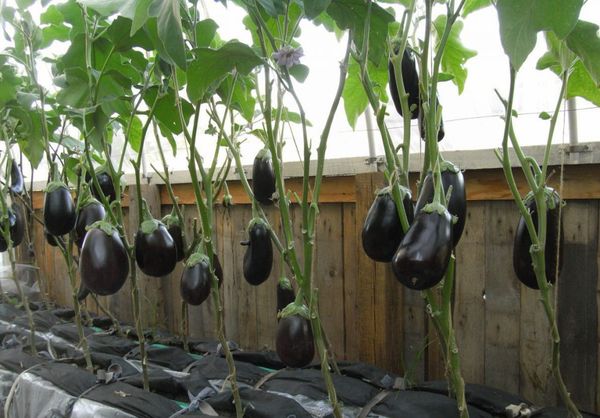Grow eggplant is not very easy, as evidenced by reviews of experienced and novice gardeners. After analyzing the problems that they had to face when growing vegetables in a greenhouse, one can avoid many cases and even boast a decent harvest, following the rules of care, watering and growing properly.
Table of contents
- Is it possible to grow eggplants in the greenhouse
- Basic requirements for growing in a greenhouse from polycarbonate
- How to choose a greenhouse for planting outside the open ground
- The right time to disembark
- What scheme to plant seedlings
- Care of the first shoots
- Care for grown eggplants
- Possible difficulties in growing eggplant
- Harvesting and Storage
- Reviews gardeners about growing vegetables in greenhouses
Is it possible to grow eggplants in the greenhouse
Growing eggplants in open ground or in a closed greenhouse becomes a real challenge for every gardener. Not everyone is able to pass it, especially when it comes to the cultivation of vegetables in the Urals or in Siberia.
The harsher the climate, the less profitable agricultural technologyAfter all, culture develops well only under certain temperature conditions. Do without the heating system in the greenhouse will not work, which means that another item of expenditure falls on the gardener.
There is no need to worry about the possibility of cultivating the southern fruit in the conditions of the middle zone and Siberia. Thanks to the painstaking and long-term work of the breeders, it was possible to develop varieties resistant to cold and diseases.
Among the popular hybrids: Matrosik, Robin Hood, Almaz, Albatross, etc.
- Matrosik
- Robin Hood
- Diamond
Basic requirements for growing in a greenhouse from polycarbonate
The main secrets include:
- correct selection of varieties (assortment for greenhouses has more than 20 varieties of vegetables, characterized by cold resistance);
- greenhouse construction must have vents for an opportunity to change temperature condition and to carry out airing;
- to maintain the temperature of the greenhouse is equipped heating system (for regions with a harsh climate);
- light day for the plant should be within 12 hours, with a lack of lighting, it is recommended to install daytime lamps;
- watering is carried out warm water (24 degrees), irrigation should start from the 5th day after planting, try not to spray the foliage;
- the soil must be fertilized, the structure is loose;
- At the flowering stage, removal of excess flowers is performed (rationing of the fruiting process)
- As the culture develops, systematically introduce nutritional supplements.
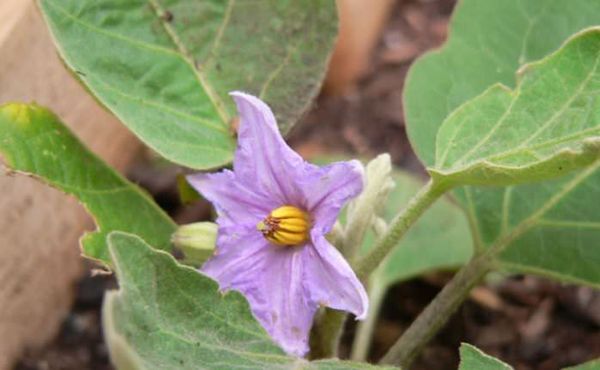
It is recommended for novice gardeners to master the aubergine agrotechnics in greenhouse conditions, where the plants are protected from winds, scorching sunlight and other weather vagaries.
How to choose a greenhouse for planting outside the open ground
The best option is considered a greenhouse or greenhouse from polycarbonate, it is able to protect eggplants from freezing and provide enough light and is easy to make with your own hands. On sunny days, the material warms up well, which reduces heating costs.
As an additional insulating layer is used anti-condensate inner lining.
Eggplants are not distinguished by high growth of bushes, therefore, there is no need for a large design, it is enough to choose a convenient option for serving with indicators from 1.8 to 2.5 m.
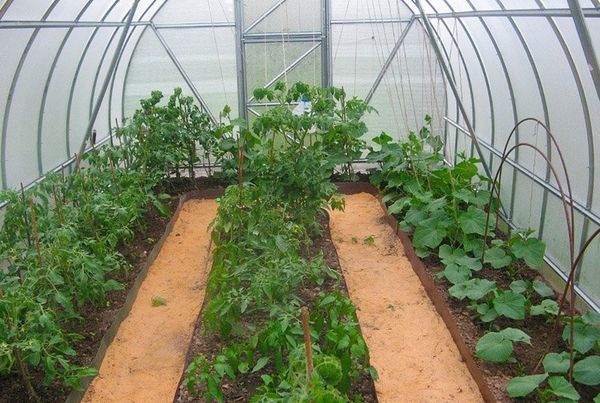
In regions with a harsh climate, a greenhouse is better. set on a foundation, rather lightweight construction with a depth of 20 cm below the ground level. The frame can be made of wood or metal profile. The presence of vents for temperature control and ventilation is considered mandatory.
The yield indicated on the seed label is lower in realitytherefore, the figure is reduced by 20-30%. The number of planted bushes depends on the area of the greenhouse where they will grow. If it is constructed specifically for planting vegetables, then it is taken into account both the parameters of the material for covering and the possibility to create the optimum temperature (heating).
In the greenhouse 2x3m can be planted 18-24 saplings eggplant.
The right time to disembark
Eggplant seedlings are planted in open ground only if when the danger of night frost is over. This period in the middle lane has on the second half of May - the beginning of June.
In the greenhouse, work begins earlier, since the presence of a shelter excludes freezing of young shoots at sub-zero temperatures, and the day sun will warm the walls of the structure and create the necessary conditions for the development of culture. When planning the landing dates, features of the greenhouse and the climate of the region are taken into account.
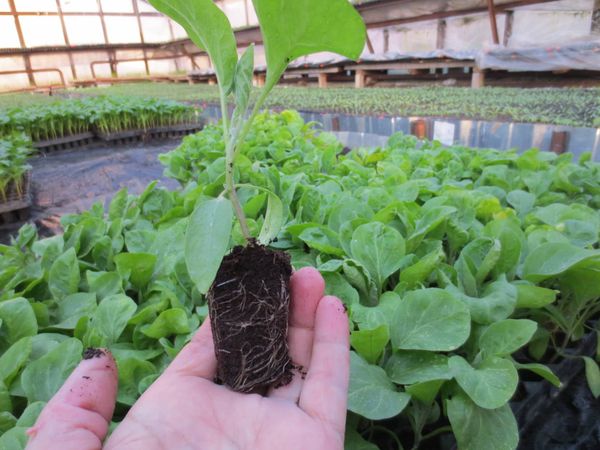
If the seedlings are grown on an industrial scale, the seeding is done from mid-February to the first decade of March. Until the transfer of seedlings to the garden takes at least 65 days, it meansIn early May, you can plan a transplant. You can shift the time of sowing and transplantation for 7-10 days, if there are certain conditions.
In heated greenhouses you can plant eggplant in the second half of January. The dates of transplantation with such a schedule are shifted to the beginning of April. This technology is not cheap, so first you need to calculate the profitability.
What scheme to plant seedlings
When planting seedlings important prevent thick bedsThis leads to lower yields and an increased risk of fungal infection.
Per 1 m2 is located about five plants in heated greenhouses, no more than three - in unheated structures. When forming beds, rows follow the following intervals:
- the aisle 60-65 cm;
- the distance between the holes in the row is 30-35 cm.
Depth of planting seedlings - 15-18 cm. Favorable temperature conditions for adaptation of young shoots correspond to 18-20 degrees (on the ground at least 15 degrees).
For varieties with spreading bushes, a scheme with a staggered arrangement of holes (interval 60 cm) is more suitable. Low-growing plants are planted in 2 rows with a 65 cm row spacing, the distance between the bushes in a row is 40-45 cm.
Care of the first shoots
After germination, seedlings need special conditions and temperature conditions. 18-20 degrees.
Lighting
To ensure this condition will need to install in the room fluorescent lamps. Additional illumination should be evenly distributed across all containers with seedlings.
Watering
Excess moisture can lead to the death of the plant, so the seedlings are watered moderately. Regularity of procedures - 1 time in 3-5 days. The water is introduced in small portions into the soil, and not on the shoots.

Top dressing and fertilizers
The first feeding make after the first shoots. To the choice of fertilizer are carefully, because of its properties depends on the development of culture.
Some gardeners prefer liquid solutions, such as potassium nitrate (3 g. Funds per 1 liter of water).With the introduction of fluid try not to fall on the greens, so as not to burn it. The ash solution is considered to be no less useful (a glass of ash per 7 liters of water). Not bad proved the fertilizer Kemira Lux (2g. 1 liter of water).
The second feed is made 3-4 weeks later. Such means as Biohumus, Healthy Garden, Bioton have not lost their relevance. They are absolutely safe for culture, but they do a good job.
If the shoots slowed growth, it is recommended to use the tools: Agricola Forte, Signor, Ideal.
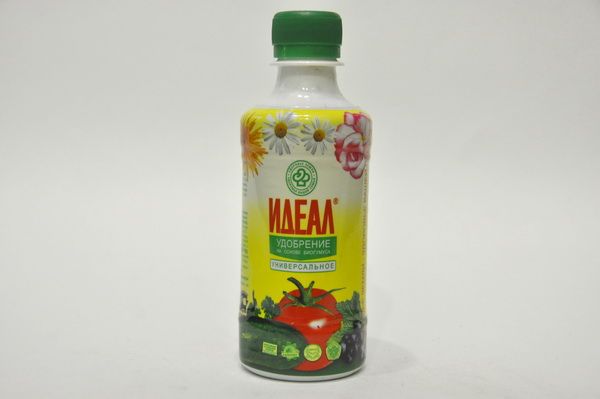
Care for grown eggplants
Pollination
The culture of flowers bisexual, the process of pollination occurs spontaneously. To enhance the effect in the morning you can walk through the rows and shake each bush slightly. More drastic measures of pollination are not provided.
Features of the formation of bushes
You can create in three ways: in one, two and three stalks. The option of forming the plant is chosen exclusively taking into account the characteristics of the variety.Unnecessary ovaries pull on themselves, not allowing the rest of the fruit to develop, so it is considered necessary to remove them.
When cultivating a vegetable in a greenhouse pruning done 2 weeks after disembarkation seedlings. To do this, remove all the processes that are located below the first branch. After the formation of 4-5 shoots pinch the top.
When guiding this procedure, it is possible to focus on the height of the bush, it should be between 25-30 cm. For high varieties, it may be necessary to tie up the bushes.
Watering and the necessary dressing
After 5 days after planting seedlings on greenhouse beds need to moisten the plants warm water. Further procedures to carry out at least 1 time per weekbetter in the morning. Water is brought under the root of the plant so that the foliage remains dry.
It is recommended to maintain soil moisture. mulch beds This process replaces loosening, in which the likelihood of root damage is high.
To prevent the development of fungal diseases you need to regularly to air the greenhouse.
During the growing season, eggplants are fed 3-5 times. When cultivating a vegetable in a greenhouse, it is preferable to use complex fertilizers: Mortar, Kemira wagon (1.5 tbsp of funds for a water bucket).After the formation of the ovaries, nitrogen-phosphate fertilizers are used (for a bucket of water, 1 tsp. Ammonium nitrate, 1 tbsp. Superphosphate).
Organic products are also used for fertilizing, but they should not be abused, so as not to provoke an intensive build-up of greenery. For eggplant ideal tool Bioud (dissolved in water in proportions of 1:20).
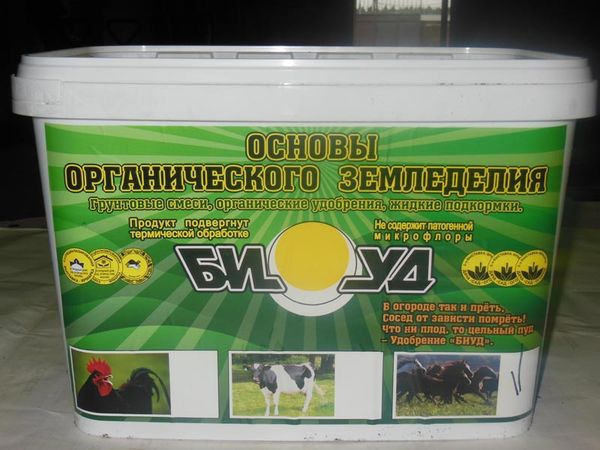
Possible difficulties in growing eggplant
When cultivating eggplant in a greenhouse, the following problems may occur:
- yellowing of foliage (the reason often lies in the violation of the mode of irrigation or the introduction of fertilizer, the disease is also not excluded);
- the fall of the ovaries (occurs as a result of a lack or excess of moisture);
- the bush develops well, and the ovaries are formed poorly (the reason lies in excessive sub-feed with nitrogen fertilizers or the lack of pruning);
- the plant blooms, but does not bear fruit (better pollinating is required);
- leaves curl (possible causes: pests, excess moisture, lack of light);
- spots on the leaves (often caused by direct sunlight);
- weak growth of shoots after transplantation (slowing down of development is more likely due to the root system, you need to feed with “root”).
Harvesting and Storage
You should not be guided by the color, even long before the ripening the skin of the fruit takes on a characteristic varietal color. The first clue will be the degree of elasticity of the pulp. When you click on the eggplant will remain a small dent, which is very quickly restored.
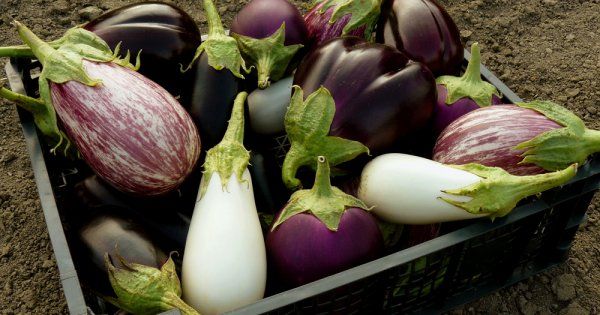
Ripe fruits are cut with shears, leaving a tail of 3-5 cm. For storage, choose a cool dark place (often basement). Vegetables can be put in boxes in 2 layers. To keep the harvest longer, vegetables are laid with straw or parchment paper. It is recommended to do a revision every 2 weeks in order to remove perishable items from the box.
Reviews gardeners about growing vegetables in greenhouses
Vladimir Ivanovich, 62 years
Our climate in the Urals is not suitable for all vegetables, but especially for eggplants. Which only varieties have not tried. My efforts are finally crowned with success - Mongolian dwarf manifested itself in unexpected ways. From a bush shot 7-9 fruits. I continue to experiment, but I will plant this variety, being confident in the harvest.
Taisiya, 47 years old
Not yet picked up a suitable variety for greenhouse cultivation, wrote off unsuccessful attempts at cultivation of eggplant solely on their mistakes in care. After removing the sample from Black prince and marywho generously ugly, I realized that the selection of seeds plays almost the main role.
Andrei, 30 years old
A small greenhouse complex is a source of my income, so I try to learn from the experience of other farmers to reduce risks.
Eggplant is quite a capricious plant, but subject to the temperature conditions and the schedule of dressings, it generously gives fruits. Agrotechnics does not include picking up seedlings, and loosening is replaced by mulching of beds. In recent years, varieties have pleasantly surprised: Carlson, Marzipan, Northern King, Lolita.
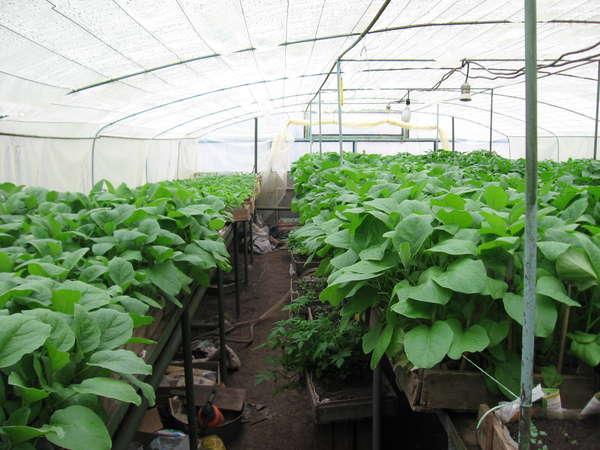
Valentina Kuzminichna, 59 years old
Seeds are planted 75 days before transplanting the flower bed. To do this, I use small transparent plastic cups, filling them with the substrate at 2/3.I carry it to the bed directly from the soil, so as not to damage the roots. I feed the plants every 10-12 days (fertilizer humate, potassium phosphate fertilizers, wood ash).
Daria, 40 years old
Those who first decided to grow eggplants in their greenhouse, I advise pay attention to the preparation of the soil and the observance of temperature. The appearance of yellowness on the leaves of the seedlings signals the problem and most often it is worth looking for in the watering. The lack of water is also dangerous, as well as its excess, and to create an optimal regime in greenhouse conditions is not easy.
Following clear rules of gardening, planting seedlings and producing a good harvest of eggplant will turn out even in regions with a harsh climate. The greenhouse design is able to provide the proper conditions if the surfaces and the soil are disinfected in a timely manner, tied up, fertilized and maintained properly.
